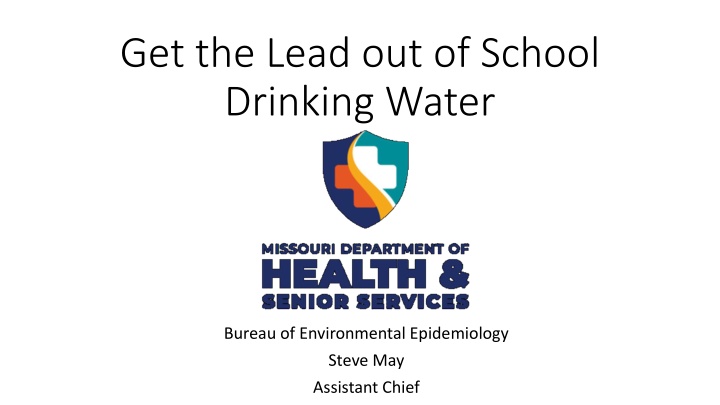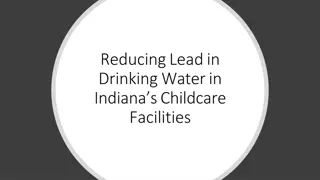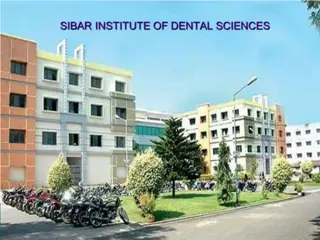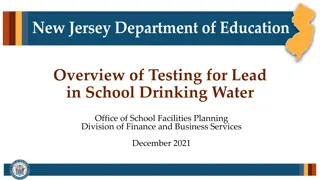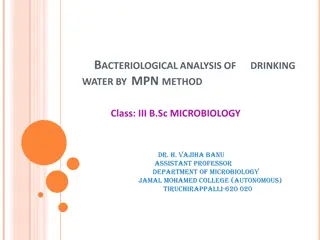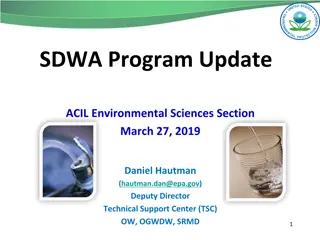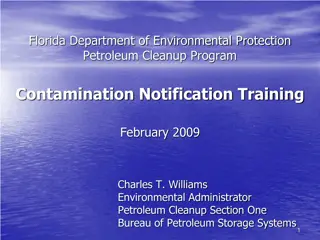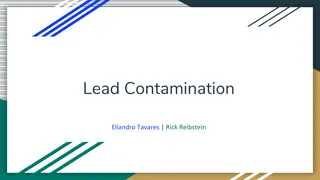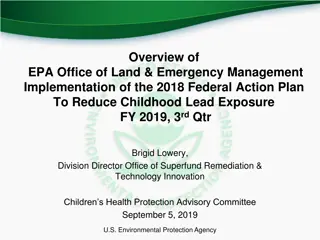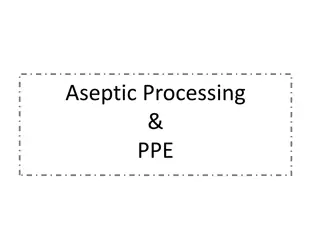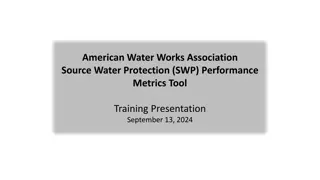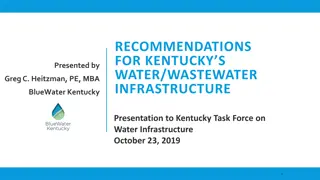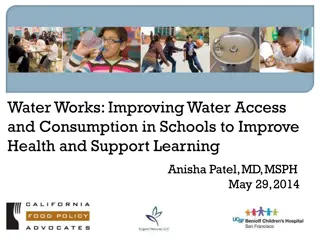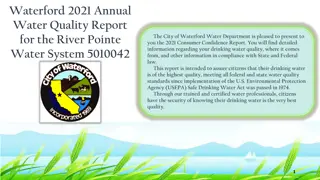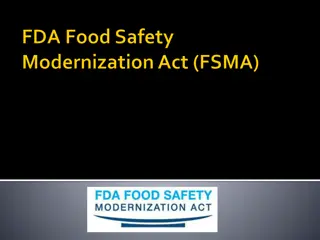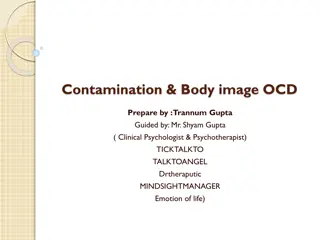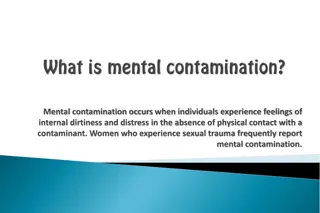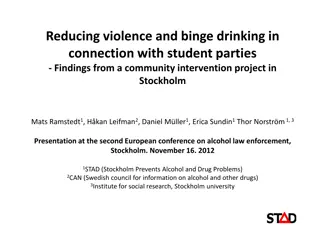Addressing Lead Contamination in School Drinking Water
Lead, a toxic heavy metal, poses severe health risks when ingested or inhaled. This article discusses the basics of lead poisoning, its effects on children and adults, and the need for action to remove lead from school drinking water to prevent irreversible health consequences.
Download Presentation

Please find below an Image/Link to download the presentation.
The content on the website is provided AS IS for your information and personal use only. It may not be sold, licensed, or shared on other websites without obtaining consent from the author.If you encounter any issues during the download, it is possible that the publisher has removed the file from their server.
You are allowed to download the files provided on this website for personal or commercial use, subject to the condition that they are used lawfully. All files are the property of their respective owners.
The content on the website is provided AS IS for your information and personal use only. It may not be sold, licensed, or shared on other websites without obtaining consent from the author.
E N D
Presentation Transcript
Get the Lead out of School Drinking Water Bureau of Environmental Epidemiology Steve May Assistant Chief
What is Lead? Lead is a heavy metal found naturally in the earth s crust. Once processed and purified, lead is heavy, malleable, has been historically used in a variety of ways including in paints, gasoline, batteries, bullets, keys, and some vinyl products such as mini-blinds. Fine particles of processed or recycled lead and/or lead dust from these items can become a health hazard when they are taken into the body through inhalation (breathing) and/or ingestion (swallowing).
Basics of Lead Poisoning Lead does NOT naturally occur in the body Enters the body through inhalation or ingestion In most cases, does not produce noticeable symptoms Toxic to the human body Impacts all body systems Health effects are irreversible Environmental hazard Poisoning is preventable https://www.oshatrain.org/courses/mods/854m1.html
Health Effects in Children Damage to the brain and nervous system Lowered IQ ADHD Learning disabilities Impaired peripheral nerve function Balance Hearing and speech impairment Slowed growth and development Anemia (low iron levels) Seizures, coma, and death
Health Effects in Adults Nervous systems effects Increased blood pressure (hypertension) Decreased kidney function Reproductive problems (Both men and Women) https://www.cleanwateraction.org/features/lead-and-drinking-water
Revised Statute of Missouri (RSMO) 160.077 Get the lead out of school drinking water act 1. This section shall be known and may be cited as the "Get the Lead Out of School Drinking Water Act".
RSMO 160.077 2. As used in this section, the following terms mean: (1) "Department", the Missouri department of health and senior services; (2) "Disadvantaged school district", any school district that serves students from a county in which at least twenty-five percent of the households in such county are below the federal poverty guidelines updated periodically in the Federal Register by the U.S. Department of Health and Human Services under the authority of 42 U.S.C. Section 9902(2), as amended, or any school district in which more than seventy percent of students in the district qualify for a free or reduced price lunch under the federal Richard B. Russell National School Lunch Act, 42 U.S.C. Section 1751 et seq.; (3) "Drinking water outlet", a potable water fixture that is used for drinking or food preparation. Drinking water outlet includes, but is not limited to: (a) A water fountain, faucet, or tap that is used or potentially used for drinking or food preparation; and (b) Ice-making and hot drink machines;
RSMO 160.077 2. As used in this section, the following terms mean: (4) "First draw", a two hundred fifty-milliliter sample immediately collected from a drinking water outlet that has been turned on after a stagnation period of at least eight hours; (5) "Parent", a parent, guardian, or other person having control or custody of a child; (6) "Private school", the same definition as in section 166.700; (7) "Public school", the same definition as in section 160.011; (8) "Remediation", decreasing the lead concentration in water from a drinking water outlet to less than five parts per billion without relying solely on flushing practices, or using methods such as the replacement of lead-containing pipes, solder, fittings, or fixtures with lead-free components. Flushing as a stand alone action shall not be considered remediation; (9) "School", any public school, private school, or provider of an early childhood education program that receives state funding.
RSMO 160.077 3. Beginning in the 2023-24 school year and for each subsequent school year, each school shall provide drinking water with a lead concentration level below five parts per billion in sufficient amounts to meet the drinking water needs of all students and staff as provided in this section.
Comparison EPA has set its limit for lead in public drinking water at 15 parts per billion (ppb) FDA limits lead in bottled drinking water to below 5 ppb Missouri requires schools and early childhood education centers to provide drinking water with lead levels below 5 ppb
RSMO 160.077 4. (1) On or before January 1, 2024, each school shall: (a) Conduct an inventory of all drinking water outlets and all outlets that are used for dispensing water for cooking or for cleaning cooking and eating utensils in each of the school's buildings; (b) Develop a plan for testing each outlet inventoried under paragraph (a) of this subdivision and make such plan available to the public; and (c) Upon request, provide general information on the health effects of lead contamination and additional informational resources for employees and parents of children at each school. (2) Each school shall make buildings housing early childhood education programs, kindergartens, and elementary schools the priority when complying with paragraphs (a) and (b) of subdivision (1) of this subsection.
RSMO 160.077 4. (3) Before August 1, 2024, or the first day on which students will be present in the building, whichever is later, each school shall: (a) Perform all testing as required by subsection 5 of this section and within two weeks after receiving test results, make all testing results and any lead remediation plans available on the school's website; (b) Remove and replace any drinking water coolers or drinking water outlets that the United States Environmental Protection Agency has determined are not lead-free under the federal Lead Contamination Control Act of 1988, as amended; except the school shall not be required to replace those drinking water outlets or water coolers that tested under the requirements of this section and have been determined to be dispensing drinking water with a lead concentration less than five part per billion; however, such drinking water outlet or water cooler shall be subject to all testing requirements and shall not be excluded from testing under subsection 10 of this section.
RSMO 160.077 4. (4) If testing indicates that the water source is causing the contamination and until such time that the source of the contamination has been remediated, the school shall: (a) Install a filter at each point at which the water supply enters the building; (b) Install a filter that reduces lead in drinking water on each water outlet inventoried under paragraph (a) of subdivision (1) of this subsection to ensure lead concentrations are below five parts per billion; or (c) Provide purified water at each water outlet inventoried under paragraph (a) of subdivision (1) of this subsection.
RSMO 160.077 (5) If testing indicates that the internal building piping is causing the contamination and until such time that the source of the contamination has been remediated, the school shall: (a) Install a filter that reduces lead in drinking water on each water outlet inventoried under paragraph (a) of subdivision (1) of this subsection to ensure lead concentrations are below five parts per billion; or (b) Provide purified water at each water outlet inventoried under paragraph (a) of subdivision (1) of this subsection. (6) If a pipe, solder, fitting, or fixture is replaced as part of remediation, the replacement shall be lead free, as such term is defined in 40 CFR 143.12, as amended.
RSMO 160.077 (7) If a test result exceeds five parts per billion, the affected school shall: (a) Contact parents and staff via written notification within seven business days after receiving the test result. The notification shall include at least: a. The test results and a summary that explains such results; b. A description of any remedial steps taken; and c. A description of general health effects of lead contamination and community specific resources; and (b) Provide bottled water if there is not enough water to meet the drinking water needs of the students, teachers, and staff.
RSMO 160.077 (8) School districts shall submit such annual testing results to the department. (9) This subsection shall not be construed to prevent a school from conducting more frequent testing than required under this section.
RSMO 160.077 5. (1) Before August 1, 2024, or the first day on which students will be present in the building, whichever is later, and annually thereafter, each school shall conduct testing for lead by first-draw and follow-up flush samples of a random sampling of at least twenty-five percent of remediated drinking water outlets until all remediated sources have been tested as recommended by the 2018 version of the United States Environmental Protection Agency's Training, Testing, and Taking Action program. The testing shall be conducted and the results analyzed for both types of tests by an entity or entities approved by the department. (2) If, in the ten years prior to the 2023-24 school year, a fixture tested above five parts per billion for lead, such fixture does not need to be repeat tested for lead, but instead remediation shall begin on such fixture.
RSMO 160.077 6. (1) In addition to the apportionments payable to a school district under chapter 163, the department of natural resources, with support from the department of elementary and secondary education and the department of health and senior services, is hereby authorized to apportion to any school additional funding for the filtration, testing, and other remediation of drinking water systems required under this section, subject to appropriation. (2) To the extent permitted by federal law, a school district may seek reimbursement or other funds for compliance incurred under this section under any applicable federal law including, but not limited to, the America's Water Infrastructure Act of 2018 and the Water Infrastructure Finance and Innovation Act of 2014, 33 U.S.C. Section 3901 et seq. (3) Disadvantaged school districts shall receive funding priority under this subsection.
RSMO 160.077 7. The department, in conjunction with the department of elementary and secondary education, shall publish a report biennially based on the findings from the water testing conducted under this section. Such report shall be published on the department of natural resources website. 8. For public schools, the department shall ensure compliance with this section. Each school district shall be responsible for ensuring compliance within each school within the school district's jurisdiction. 9. No school building constructed after January 4, 2014, as provided in the federal Reduction of Lead in Drinking Water Act (42 U.S.C. Section 300g-6), as amended, shall be required to install, maintain, or replace filters under paragraph (c) of subdivision (1)*of subsection 4 of this section.
RSMO 160.077 10. A school that tests and does not find a drinking water source with a lead concentration above the acceptable level as described in subsection 3 of this section shall be required to test only every five years. 11. The department may promulgate all necessary rules and regulations for the administration of this section. Any rule or portion of a rule, as that term is defined in section 536.010, that is created under the authority delegated in this section shall become effective only if it complies with and is subject to all of the provisions of chapter 536 and, if applicable, section 536.028. This section and chapter 536 are nonseverable and if any of the powers vested with the general assembly pursuant to chapter 536 to review, to delay the effective date, or to disapprove and annul a rule are subsequently held unconstitutional, then the grant of rulemaking authority and any rule proposed or adopted after August 28, 2022, shall be invalid and void.
Responsibilities of the state DESE responsibility: With DHSS, publish a biennial (two years) report based on the findings of from water testing; to be posted on DNR s website. (Subsection 7) DNR responsibilities: Apportion funding to schools, as appropriated, for filtration, testing, and other remediation of drinking water systems; disadvantaged schools should receive priority for funding. (Subsection 6) Post the biennial report on their website. (Subsection 7) DHSS responsibilities: With DESE, publish a biennial report based on the findings of from water testing; to be posted on DNR s website. (Subsection 7) Ensure public schools comply with the law. (Subsection 8) May promulgate rules as necessary. (Subsection 11)
ARPA Funding $27 Million Designated to Department of Natural Resources which is allowing DHSS to disperse Funds are not available to pay state employees to operate the program Can be used to reimburse qualifying schools for testing and remediation
Guidance and Available Technical Resources Tips for schools RSMo 160.077 https://health.mo.gov/living/environment/lead/pdf/tips-for-schools-fact- sheet.pdf EPA s 3Ts program https://www.epa.gov/system/files/documents/2021-07/epa-3ts-guidance- document-english.pdf Lead Poisoning information https://health.mo.gov/living/environment/lead/index.php DHSS WIIN Grant https://health.mo.gov/living/environment/wiin-grant/ Available to public schools and childcare facilities serving children under the age of six
Contact Information Bureau of Environmental Epidemiology Steve May (573) 751-6102 HealthyDrinkingWater@health.mo.gov
